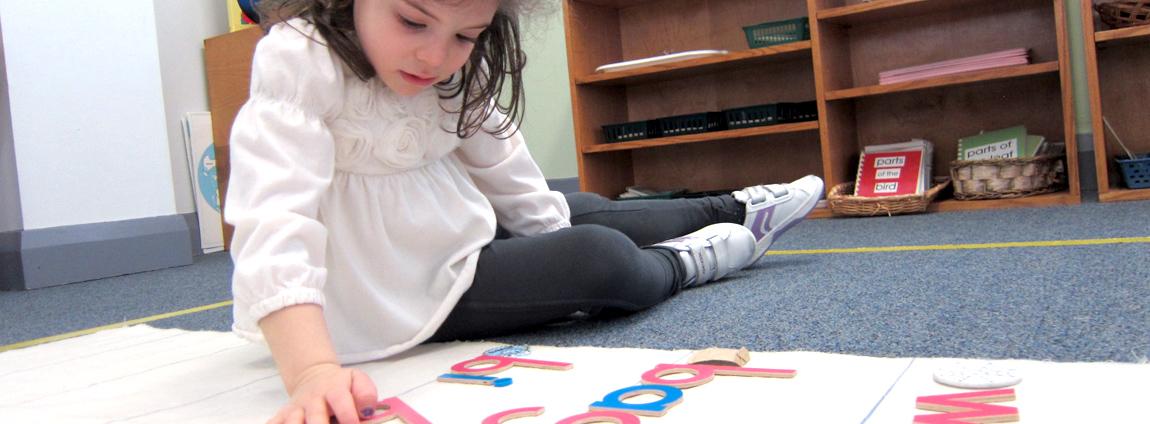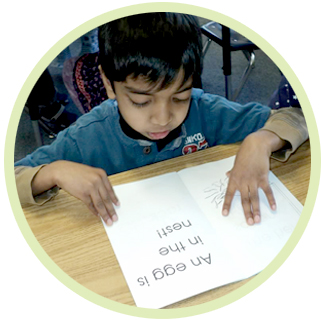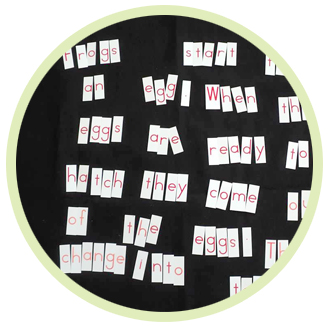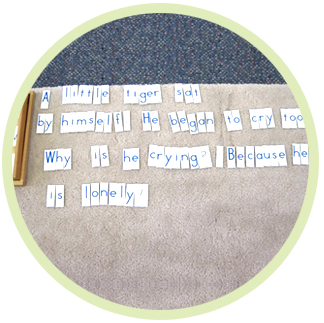IN A MONTESSORI CLASSROOM children learn the phonetic sounds of the letters before they learn the
alphabetical names in a sequence. The phonetic sounds are given first because these are the sounds they hear in
words that they need to be able to read. The children first become aware of these phonetic sounds when the
teacher introduces the consonants with the Sandpaper Letters.
THE INDIVIDUAL PRESENTATION OF language materials in a Montessori
classroom allows the teacher to take advantage of each child’s greatest periods of interest. Reading instruction
begins on the day when the children want to know what a words says or when they show an interest in using the
Sandpaper Letters. Writing – or the construction of words with the movable letters - nearly always preceeds
reading in a Montessori environment.
GRADUALLY THE CHILDREN LEARN THE the irregular words, and words with
two and three syllables, by doing many reading exercises which offer variety rather than monotonous repetition.
Also available in the Montessori classroom are many attractive books using a large number of phonetic words.
Proceeding at their own pace, children are encouraged to read about things which interest them. Their skills in
phonics gives them the means of attacking almost any new word, so that they are not limited to a specific number
of words which they have been trained to recognize by sight.
THE CHILDREN’S INTEREST IN reading is never stifled by monotony.
Rather, it is cultivated as their most important key to future learning. They are encouraged to explore books
for answers to their own questions, whether they are about frogs, rockets, stars or fire engines.
In a Montessori class, the children are introduced to grammar by games which show them that nouns are the names
of things, adjectives describe nouns, and verbs are action words. The activity becomes most enjoyable.



